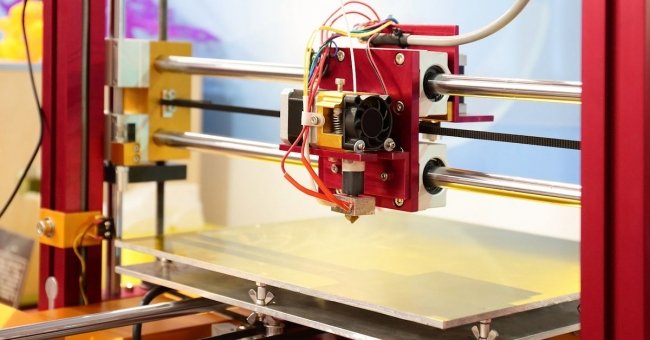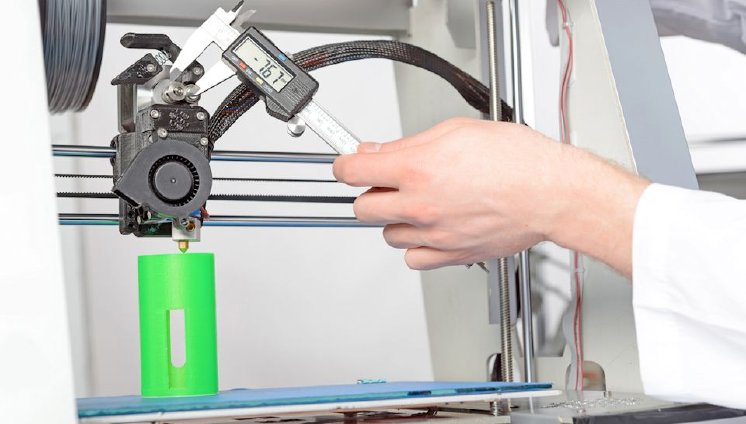We shall now analyze the supply technology enablers. All of them, when considered together, form the basis for the vision for Industry 4.0. We will examine each of these amazing technological advances one by one, thereby establishing the premise of how each of them when considered a part of the whole technology spectrum pave the way for a new era of manufacturing.
One such interesting and fast growing technology is 3-D printing, which alone has the capability to transform the way products are manufactured forever. It has applications in almost every industrial segment, from electronics to medical devices and from clothing to automotive manufacturing. So what is 3-D printing and why is it considered one of the most disruptive techniques in manufacturing? And, how does it fit in the complex vision of I4.0?
As the name suggests, 3-D printing basically allows for objects, which can be any shape or size, to be printed directly from their raw materials, based on a 3 dimensional design. There are many ways in which it can be performed, being the most interesting the one using additions of multiple layers of raw material in desired shape, popularly referred to as additive manufacturing. This unique feature allows it to provide the exact part or product required directly from raw material, anywhere and anytime, at a fractional cost, is capable of transforming the manufacturing landscape forever singlehandedly.
One of the key drivers for manufacturers moving towards I4.0 is being able to adapt with the growing need for customization and also being able to introduce new products with desired qualities faster than competitors. 3-D printing resides right at the heart of the solution for the aforementioned predicament, as it allows for parts or assemblies to be manufactured from concept. It allows manufacturers to save precious time while trying to create a new product or part for their customer base. Given its diverse nature and capability of handling different material/processes, 3-D printing allows manufacturers not only to prototype products faster, but also provide various customization options along the various stages of production and even in different stages of the logistics cycle.
Imagine a scenario where the I4.0 enabled MES application receives feedback from a set of customers through the ERP, which points toward a required change in the design of a shaft being installed on a particular medical apparatus. As soon as this flaw in design is recognized through the big-data analytics team, it is reported to the R&D team of the manufacturer, which in turn collates all the information and redesigns the said shaft.
This is where 3-D printing saves the day. In a traditional case, the R&D team would have designed the part, then provided the specs to the product development team, which in turn would have requested procurement team to then source the required mold for the parts. And only after receipt of the requisite mold would the production team then make the shaft and allow the R&D team to proceed with further analysis or approval of design.
Whereas with 3-D printing, the R&D team can make the design and just print the shaft, part by part, and check the feasibility of its design, thereby allowing improvements to be made almost instantaneously or allowing the design iteration to continue.
So basically, what 3-D printing does in the above scenario has a three pronged effect on the operation of the manufacturer:
•First, it saves precious time required to source the mold and manufacture the part which is at least a saving of 2-3 days
•Second, it saves the cost both operational and of excess material
•Third, it allows for increased speed of innovation and sort of democratization of the R&D facility
Even in mainstream manufacturing, 3-D printing brings this disruptive effect, where customized parts might be printed in a low cost efficient manner for a particular order, with least possible waste and high quality. Manufacturers may 3-D print certain parts closer to the customer in their value change allowing last minute change of specs/requirements to be accommodated.
Similarly, certain parts required to complete a particular product assembly might be printed at the customer end as required or desired, the permutations and combinations of how 3-D printing fits in the Industry 4.0 are only limited by our vision to adapt this amazing technology in the current manufacturing processes.
But to truly be able to leverage the benefits from 3-D printing manufacturers will have to acknowledge the fact that it is but a piece of a bigger pie, and that it must be coupled with other technological advances to truly get the best bang for buck.
Imagine a scenario where a manufacturer has state-of-the-art industrial 3-D printers, but lacks enough actionable information from the ERP and MES systems in place to properly utilize the printers and increase the speed of innovation. Imagine a scenario where for the lack of proper embedded electronics or sensors on products and their lack of interaction with their cyber physical eco systems, problems are neither detected or predicted as they should be in an ideal I4.0 scenario. This would mean that despite of having the right hardware which in this case is 3-D printers, the said manufacturer will fail to gain the right value out of the whole endeavor.
3-D printing brings a unique value proposition to the table. However, it will only add a massive value to any manufacturer’s operation when coupled with other technologies ranging from new modular MES/ERP applications, cloud computing, augmented reality, big data analytics, embedded electronics and mobile devices.
So stay tuned for more on these technological marvels ushering in the I4.0.


